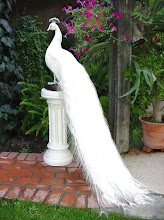Yoga Therapy for Colds and Flu
While we all are bound to suffer from the occasional cold or flu, the practicing yogi/yogini is less likely to come down with the sniffles, and when he/she does, tends to have a much faster recovery rate. This is true because of yoga’s known abilities to regulate the immune system, keeping it strong and healthy to withstand infections, and yoga’s ability to boost immune function with specific yogic practices. Yoga’s stress reducing abilities is one of the primary reasons a regular practice of yoga helps prevent and cure the common cold. Stress is known as a major contributing factor to catching a cold or flu, as stress hormones cause the thymus to shrink in size, causing it to poorly function as a producer of immune cells. Besides the general calming effects of most yoga poses, restorative poses and forward bends are especially calming to the nervous system, helping to reduce whole-body stress. The following poses are known to be especially calming to the body and mind: child, shavasana, supine bound angle pose, seated forward bend, and seated head to knee.
Any type of physical activity will give a boost to the immune system, and yoga, with its inherent stress reducing and immune enhancing properties, will both provide a short-term boost and a long-term strengthening of the immune system. In addition to a general yoga practice, specific yoga postures can be used to target specific organs of the immune system to further enhance yoga’s immune boosting abilities.
Chest opening upper back bends will activate the primary organ of the immune system, the thymus gland, located in the center of the chest. The most beneficial postures for this purpose are Cobra, Pigeon, Fish, Boat, Bow and Bridge. Since the thymus gland is located at the fourth chakra center, chanting “yum,” this chakra’s bija mantra, while performing these poses can further activate the thymus gland .
Inversions increase the passive circulation of the lymphatic system, which is responsible for the production and circulation of the immune cells to defend the body from the viruses and bacteria. Inversions such as shoulderstand, headstand, plow and legs up the wall pose, will all help improve the flow of lymph and immune cells through the body. Twists and hip openers activate secondary organs of the immune system: the spleen and the lymph nodes in groin and armpits. These organs are the production sites for the immune cells, so using yoga poses to target these organs during a cold or flu would be especially beneficial. Use twists such as seated twist, prayer twist, and knee down twist, and hip openers such as bound angle, seated angle, and pigeon to activate these organs to keep them healthy and strong.
Lion pose is a specific yoga posture that activates the immune glands of the tonsils and the lymph nodes in the neck. Performing lion pose at the very beginning of a sore throat can dramatically stop and prevent the sore throat from progressing. Another specific yogic technique that helps prevent and cure colds, especially sinus related infections, is Jala Neti (nasal irrigation). Jala Neti is the use of a Neti pot to pour water through the nasal passages, flushing out the bacteria or germs that can cause infection.
Many practicing yogis/yoginis follow a yogic diet, which can also help to prevent and cure the common cold. A yogic diet’s emphasis on whole grains, fruits, vegetables, and legumes naturally provides the body with the proper nutrition and the abundance of antioxidants that the immune system needs to function optimally. A yogic diet is also naturally free or low of sugar, caffeine, alcohol, and fat—all of which are known to suppress various immune functions.
These various practices and poses of yoga are an excellent way to keep the immune system healthy and strong to prevent and quickly recover from the common cold or flu. If you do come down with a cold or flu, it is important to rest, drink plenty of fluids, eat simple wholesome foods and to practice some gentle yoga poses. If after three to four days there is no change in your symptoms, or a worsening of symptoms occurs, please seek medical attention from a qualified health care practitioner.


No comments:
Post a Comment